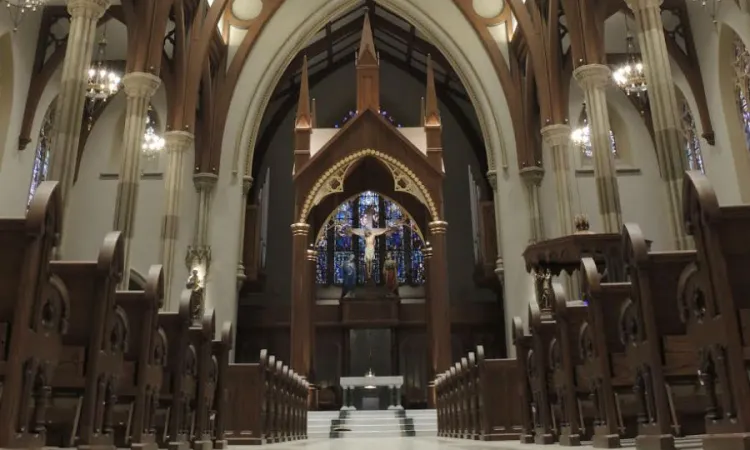Jun 24, 2017
When Constantine legalized the Christian faith with the Edict of Milan in 313 A.D., the Church emerged from Rome's subterranean cemeteries and moved into the city's basilicas. In these buildings, courts of justice were held as well as other public functions. In the basilicas of imperial Rome, the apse, located at the farthest point opposite the main entrance, was the seat of authority. Here the magistrates would sit in judgment. Here the emperor would be enthroned. Because of the importance of this space, the early Christians transformed the apse into the sacred space for the liturgy. Here the bishop, surrounded by his priests, would sit on a slightly elevated chair.
Christians began to decorate their new liturgical space with elaborate artistic themes borrowed from imperial Rome. In this period of transition from a persecuted Church to a legal religion, the simple representation of Jesus as a young shepherd gave way to a more stylized image of Jesus as teacher and ruler of the world. This can be seen in the fourth century basilica of Santa Pudenziana, one of the oldest places of Christian worship in Rome.
In the beautiful mosaic adorning the apse of Santa Pudenziana, Christ wears the purple-trimmed gold toga of the Roman emperor. The shepherd has become the ruler of the world. He holds a book in his left hand. He extends his right hand, expounding his lesson in the fashion of a classical Roman teacher. On either side of him are the apostles to whom he is entrusting his teaching and authority for future generations.
Early Christians worshipping in this basilica would see in the mosaic above Christ seated on a jewel-encrusted throne with his apostles surrounding him. Directly below him, they would see their bishop seated with priests beside him and his faithful before him. Instinctively, they understood. In the life of the Church, the bishop continues Christ's mission. His seat or cathedra is the place of Christ's own authority.
Thus, in Christian tradition, the cathedra symbolizes the bishop's role as the teacher to whom Christ entrusts a particular church to sanctify and govern. In every diocese, there is one church designated as the cathedral. In a prominent place in the apse or sanctuary of this church stands the bishop's seat or cathedra. This is what makes a particular church building a cathedral and the bishop's church. Because of its theological significance, the cathedral is usually the most beautiful and historic of all the churches in a diocese. In fact, the presence of the bishop's cathedra makes the cathedral itself a symbol of the theological role of the bishop for the local Church and a reminder to the faithful of the very nature of the Church herself.


